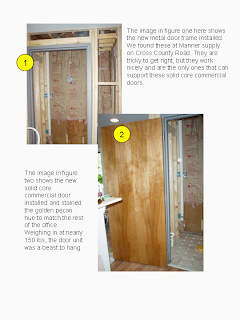Pirogue History



 Since I began building my Bayou Pirogue, I have become increasingly more inquisitive about the history of the watercraft and it's use in the coastal south. As it turns out, there is quite a bit of heritage attached to these flat bottomed, shallow drafting craft. In fact, according to research compiled by the Army Corp of Engineers, the boats were infamous in Louisiana waterways during the Cival War. Before attacking Confederate Fort Burton, Union troops raided the nearby basin, confiscating sugar, molasses, cotton and firearms from Bayou residents. These raids by Union troops became increasingly frequent and made life more difficult for the local residents.
Since I began building my Bayou Pirogue, I have become increasingly more inquisitive about the history of the watercraft and it's use in the coastal south. As it turns out, there is quite a bit of heritage attached to these flat bottomed, shallow drafting craft. In fact, according to research compiled by the Army Corp of Engineers, the boats were infamous in Louisiana waterways during the Cival War. Before attacking Confederate Fort Burton, Union troops raided the nearby basin, confiscating sugar, molasses, cotton and firearms from Bayou residents. These raids by Union troops became increasingly frequent and made life more difficult for the local residents.
Union forces defeated the Confederates at Bisland, Grand Lake and Fort Burton in the spring of 1863, giving them control of the surrounding waterways wherever they could operate armored gunboats, and the Confederates could not match the firepower of these Vessels. Even with this advantage, though, Confederate guerrilla forces, as well as jayhawkers and smugglers, constantly harassed the Union forces, especially in the summer of 1864. Jayhawkers were roaming bands of deserters, draft dodgers and criminals who infested much of the backwater Bayous of Louisiana during the last three years of the war. Confederate irregular forces used the familiar terrain of the basin to their advantage, relying upon pirogues, skiffs and horses in their hit and-run forays against the federals. To deal with these problems, the Union command decided to destroy all ferries, bridges and boats in the basin as well as confiscate all contraband goods. Anything not produced locally, including flour, salt and other staples, became unavailable to residents. These policies antagonized local Union sympathizers and hindered the collection of intelligence. In November 1864, the Union command conceded that small loyal planters in the basin could keep their pirogues if they were hidden at night from "guerrilla thieves".  I am taking my time in the construction of my Cyprus Pirogue. I have decided to include chine blocks on the interior for the added stability. I want to be able to maneuver the boat with a punt while standing. I've decided that the lower Edisto past Parkers Ferry will be where the pirogue makes her maiden voyage. Hopefully it will be completed by the time we take our annual vacation to Edisto Island in the later part of June. I'm going to add fore and aft decks as well as a keel strip to increase its stability. It is widely known that the Pirogue is a "tricky" boat, meaning one might get wet while learning to pilot it standing up. I'm experienced in a canoe, so using the eddies and current of the Edisto to my advantage is something I am fully capable of, but tossing an eight foot cast net off the bow of a flat bottom boat less that 28'' wide and 10'' deep is not a challenge for the faint at heart. Trying it out at dead low tide in June is the most prudent plan, of course my kids will video tape the whole ordeal in case the inevitable happens and I go over the side with the first cast.
I am taking my time in the construction of my Cyprus Pirogue. I have decided to include chine blocks on the interior for the added stability. I want to be able to maneuver the boat with a punt while standing. I've decided that the lower Edisto past Parkers Ferry will be where the pirogue makes her maiden voyage. Hopefully it will be completed by the time we take our annual vacation to Edisto Island in the later part of June. I'm going to add fore and aft decks as well as a keel strip to increase its stability. It is widely known that the Pirogue is a "tricky" boat, meaning one might get wet while learning to pilot it standing up. I'm experienced in a canoe, so using the eddies and current of the Edisto to my advantage is something I am fully capable of, but tossing an eight foot cast net off the bow of a flat bottom boat less that 28'' wide and 10'' deep is not a challenge for the faint at heart. Trying it out at dead low tide in June is the most prudent plan, of course my kids will video tape the whole ordeal in case the inevitable happens and I go over the side with the first cast.




















